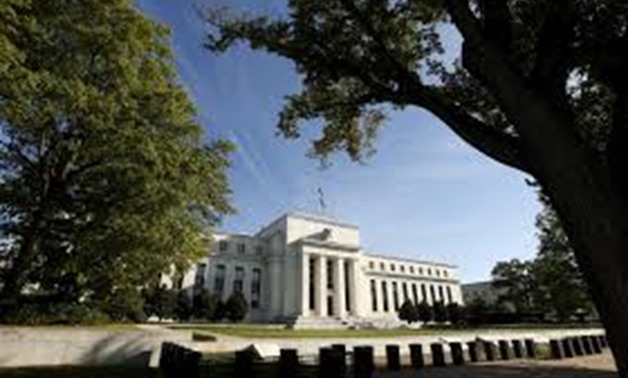
The Federal Reserve headquarters in Washington September 16 2015. REUTERS/Kevin Lamarque/File Photo
WASHINGTON - 31 July 2019: The U.S. Federal Reserve is almost certain to cut interest rates for the first time in more than a decade on Wednesday, delivering a mild jolt to an economy that is facing headwinds from trade disputes and a global slowdown.
The widely expected quarter-percentage-point lowering of borrowing costs, however, is unlikely to assuage U.S. President Donald Trump’s increasingly strident demands for the central bank to ease monetary policy.
On Tuesday, Trump again called for a large interest rate cut. The Republican president has blamed the Fed under Chairman Jerome Powell for undercutting his administration’s efforts to boost economic growth.
Fed officials hope a modest rate cut will lower the odds of a recession by helping to boost tame inflation at home and offset risks from slowing growth abroad and rising tensions with trading partners like China.
The central bank is expected to leave the door open to further rate cuts should those risks fail to dissipate.
The Fed is scheduled to release its rates decision at 2 p.m. EDT (1800 GMT) at the end of a two-day policy meeting.
It will then be on Powell, who is due to hold a news conference shortly after the release of the policy statement, to explain why the move was necessary, and what comes next.
“How well the Fed communicates its guidance on potential actions to sustain the record-breaking U.S. economic expansion, and in the process stimulate inflation, will greatly determine how the markets react,” Sam Bullard, senior economist with Wells Fargo, wrote in a note to investors.
POSSIBLE DISSENT
Critics, including some Goldman Sachs economists, say that cutting rates now will sap the Fed’s firepower in the event of an actual recession, and could contribute to market volatility and even asset bubbles.
Indeed, the decision will likely draw a dissent from one or two policymakers who believe that lowering rates as insurance against a sharp downturn that seems less than imminent could set the stage for an unwanted inflationary surge.
With U.S. unemployment near a 50-year low and household spending already strong, Boston Fed President Eric Rosengren and Kansas City Fed President Esther George have signaled they may not be ready to ease policy.
Powell, in explaining the Fed’s move, will likely point to a number of factors that could lead to a drop in demand for U.S. goods and services, including a European slowdown, a potentially messy British exit from the European Union and trade-induced weakness in global manufacturing, particularly in China.
And with weak U.S. business investment and inflation that’s running well below the Fed’s 2% annual target, Powell will likely argue that a rate cut will boost the economy’s ability to weather a possible global storm.
“The Fed sees a risk that the U.S. outlook will deteriorate, not a base case,” Cornerstone Macro economist Roberto Perli wrote in a research note. Unless the picture deteriorates substantially, the move “should not mark the beginning of a long series of rate cuts.”
Interest rate futures traders see about a 75% chance the Fed will cut its overnight benchmark lending rate, or fed funds rate, to a target range of 2.00% to 2.25%, and about a 25% chance of a reduction to a range of 1.75% to 2.00%. Further rate cuts are expected to bring it down to a range of 1.25% to 1.50% by the end of next year.
“Having already promised a rate cut, they can do nothing but move ahead with it,” said Drew Matus, who heads global economic and market strategy for MetLife Investment Management. “They seem to be trying to remove fear from the market.”

Comments
Leave a Comment